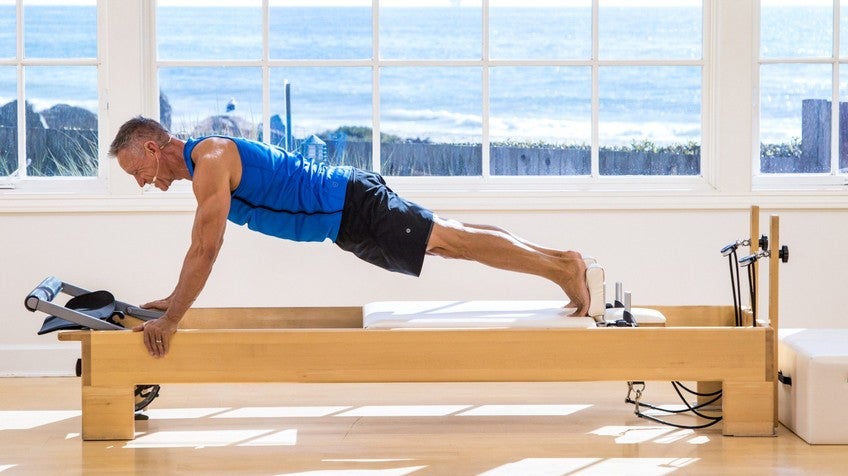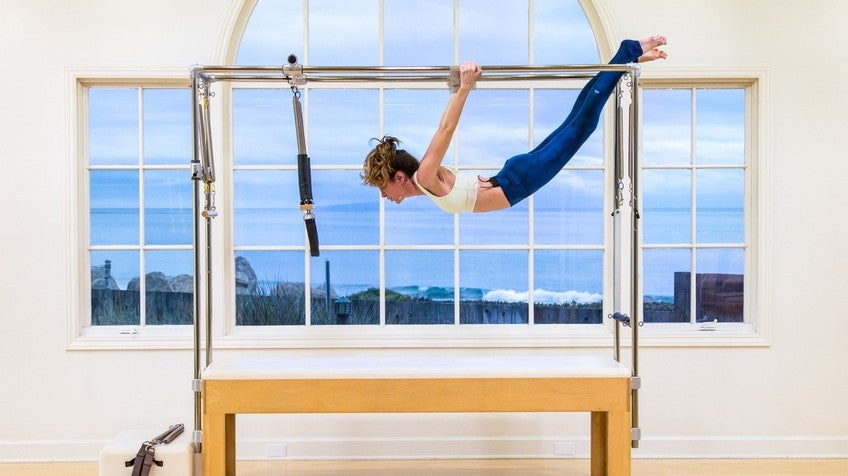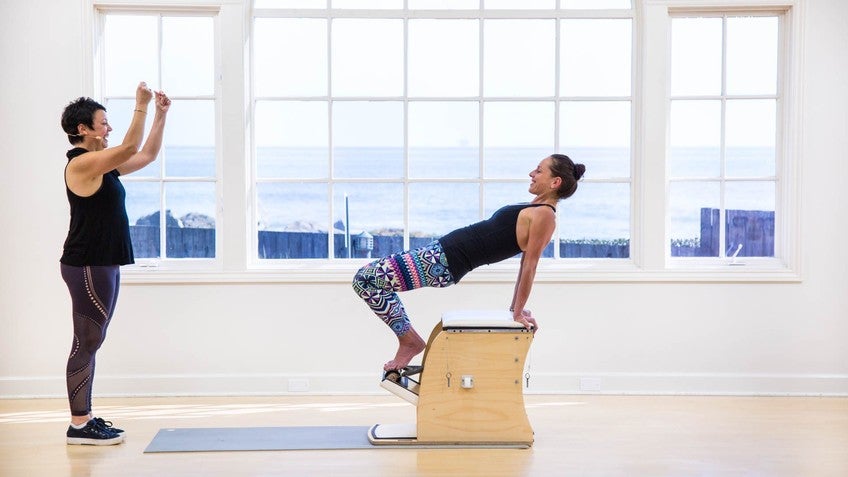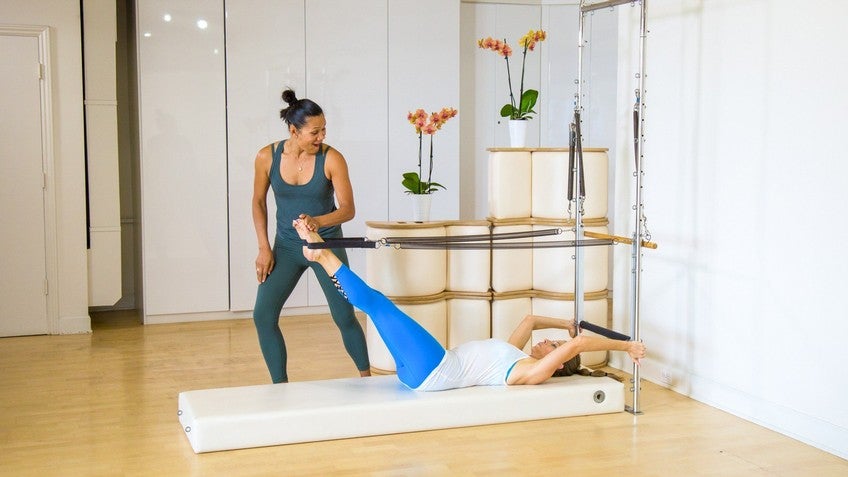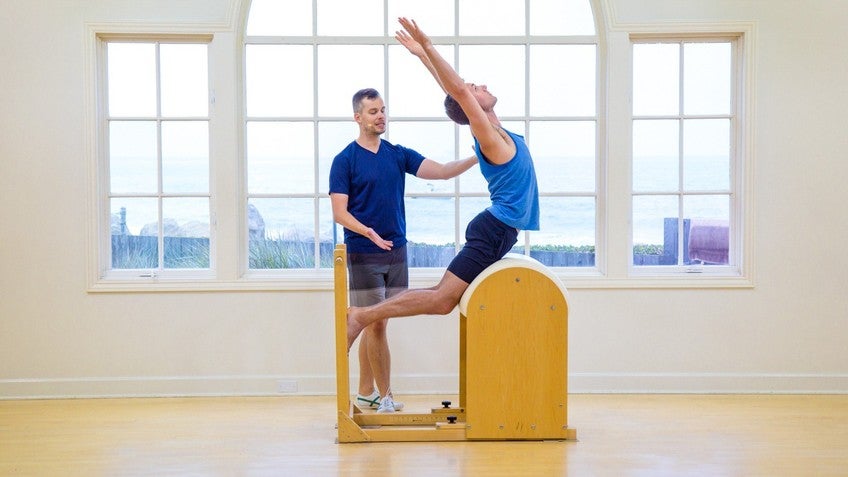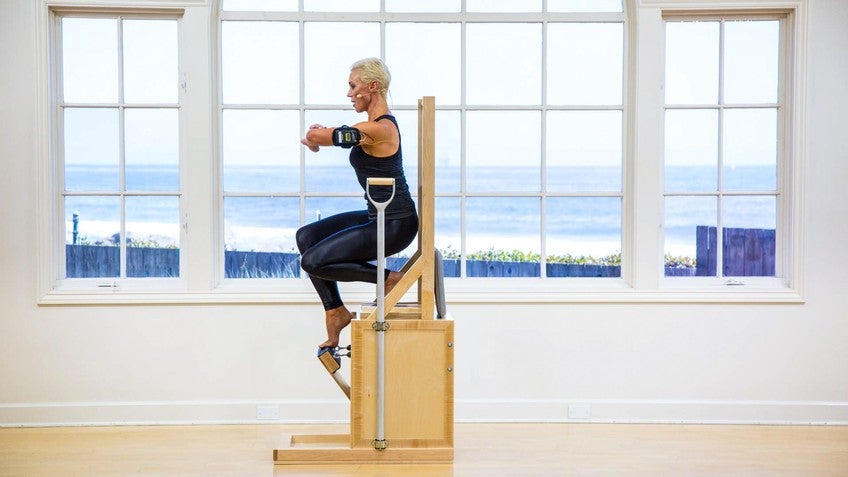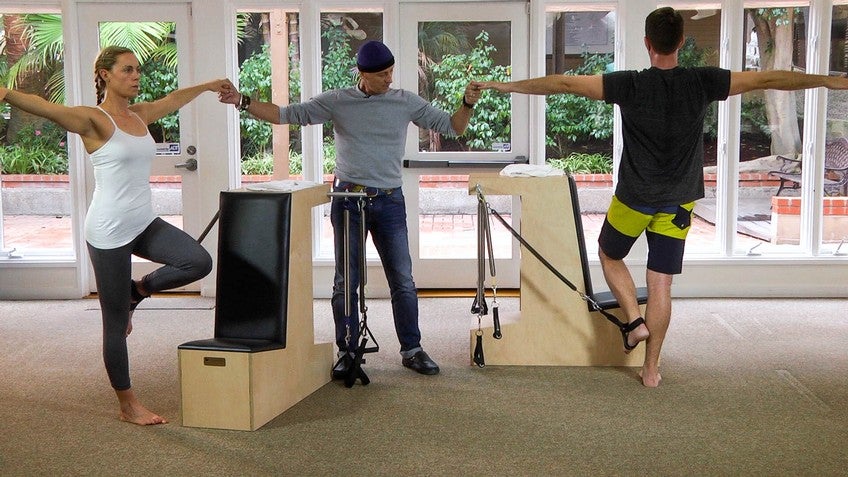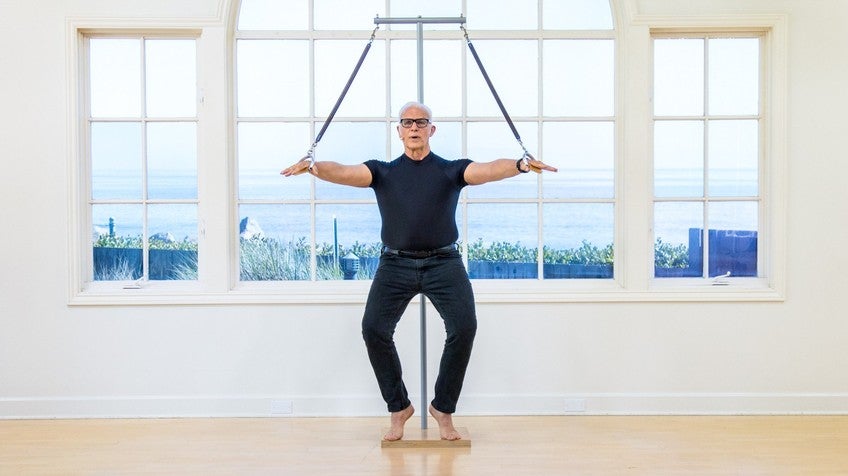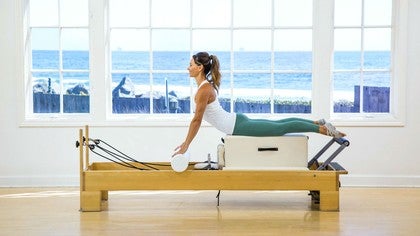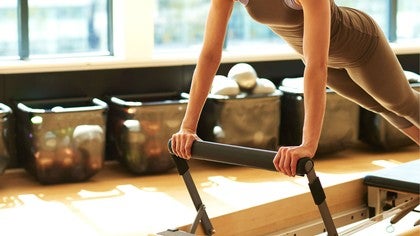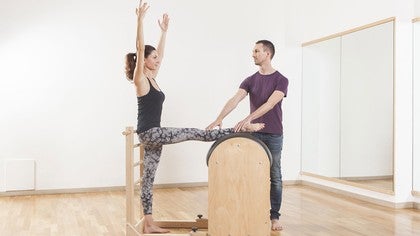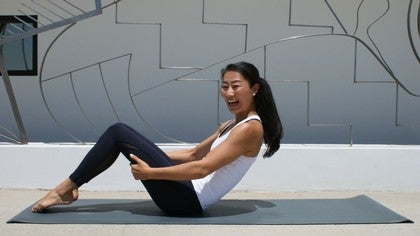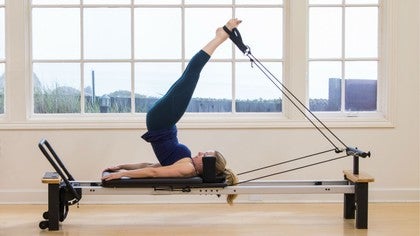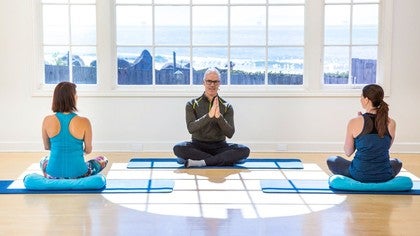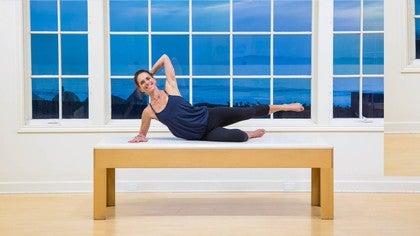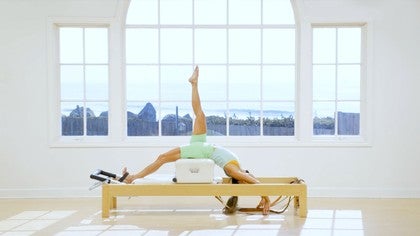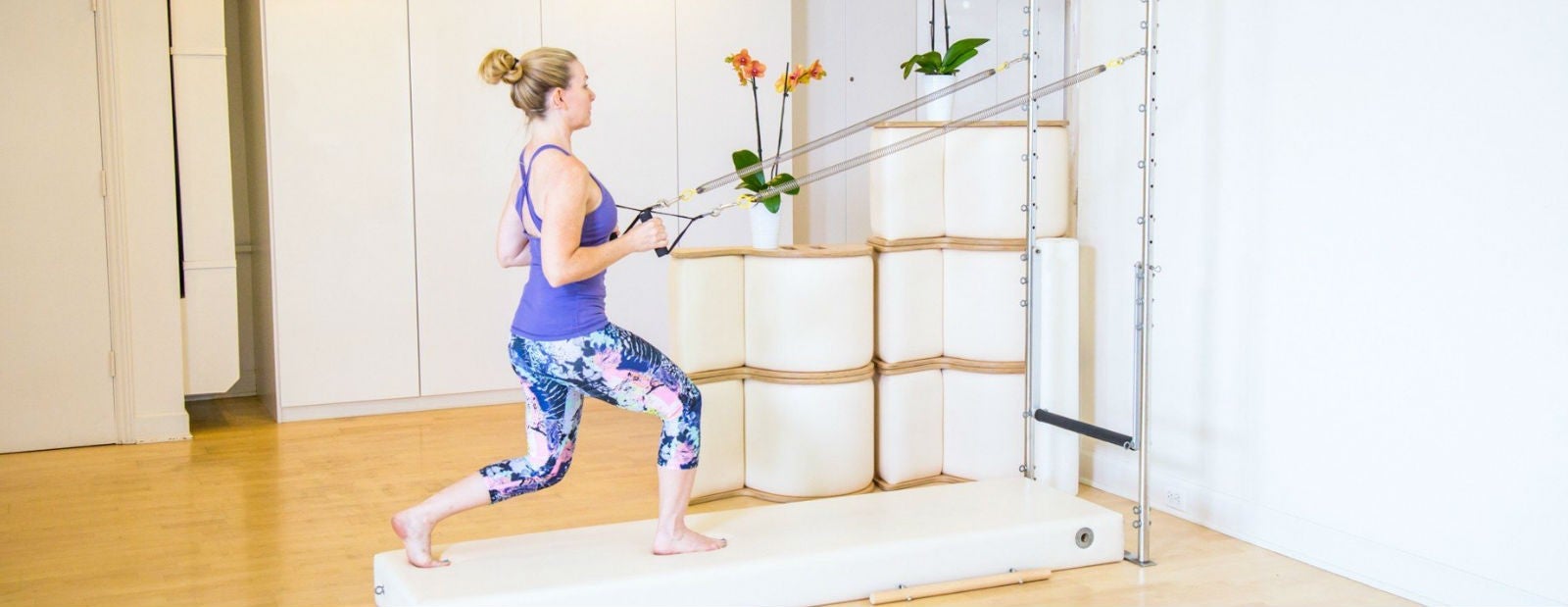
The Ultimate Guide to Pilates Equipment
If you’ve been to a Pilates studio - or you’re a studio regular - you’ve likely been introduced to a host of Pilates equipment, otherwise known as the apparatus. Nowadays, it might seem as though the Pilates Mat exercises play second fiddle to the apparatus, but it's actually the other way around.
In fact, Joseph Pilates invented the Mat repertoire first, and these exercises serve as the foundation for his entire method. That doesn't mean the apparatus and the accompanying exercises are any less important, though. After all, the equipment serves as stepping stones, with the ultimate goal of getting the body ready for the Mat exercises. Think of the apparatus as a vital part of your Pilates toolkit.
A Bit of Equipment History
Joseph Pilates first came up with the idea for his equipment in 1912, while he was stationed at an internment camp at the start of WWI. It was there that Joe began to crystallize the Pilates method, “testing” it out on some of his fellow internees. In an effort to help rehabilitate bedridden German soldiers at the camp, he rigged springs to their metal hospital beds so they could, too, do his exercises and “return to health.”
It wasn’t until Joe emigrated to the U.S. in 1926 that he filed the first patent for what he dubbed The Universal Reformer, inspired by the bed contraptions he had created more than a decade earlier. Being the innovator that he was, it wasn’t long before Joe invented more equipment, such as the Cadillac, Wunda Chair, and Guillotine, at his studio in New York City.
With the exception of the Barrels, Joe designed the apparatus to operate with spring-based resistance, to simultaneously deliver support and challenge to the body as it moves through the exercises.
Get to Know Your Pilates Equipment
Fast-forward to 2018, a period of time in which we’re lucky enough to have access to a handful of reputable manufacturers of Pilates equipment. While there are those that aim to stay as true as possible to Joe’s original designs, others have chosen to put a more modern spin on them. These “evolved” versions feature new materials (wood in place of metal, for example) and features that offer increased adjustability and versatility via technological upgrades. Both “camps” have their merits, and it all boils down to choosing the one that best suits your needs or preferences.
What Equipment is Need for Pilates?
Although you’re probably more familiar with Pilates equipment like the Reformer, Cadillac and Wunda Chair, which are staples in most Pilates studios today, there are a handful of other types of apparatus, each with unique, specific purposes. The various pieces are meant to be complementary, with each playing an integral role in the Pilates system. (More on them in a bit...)
Want to learn more about the apparatus? Read on for a primer on the Pilates equipment.
Pilates Equipment Glossary
Don’t know the difference between the High Chair and the Baby Chair? Well, you will soon!
Reformer
The first piece of equipment Joe invented, the Reformer, features an elevated bed-like frame, either made from metal or wood (or a mix), that houses a gliding, cushioned platform called a carriage; the carriage moves along rails by way of a pulley system. On one end, the carriage is attached to a set of springs that deliver resistance and can be customized to accommodate any fitness level.
The Reformer also features a footbar at one end, shoulder blocks, and a movable headrest at the other, and comes with a variety of accessories such as a Sitting Box (a box-like platform that elevates the carriage).
Revered for its incredible versatility, the Reformer allowing for a vast variety of exercises in all body positions (i.e., lying down, sitting, kneeling, standing).
Cadillac
...aka the Trapeze Table
Aptly named after the car company, the Pilates Cadillac is considered the ultimate apparatus. It looks like a canopy bed, with a four-post metal frame and a cushioned mat. At one end, there’s the push-through bar, which can be loaded with springs; arm and legs Springs, as well as a roll-down bar, can be hooked up to the opposite end. A slider bar at the top of the canopy houses the trapeze bar, which accommodates everything from those cool acrobatic movements for advanced students to supported stretching for more fragile clients.Wunda Chair
Don’t let the name fool you; there's no just sitting around in this chair! One of the most challenging pieces of Pilates equipment around, the Wunda Chair features a cushioned “seat” - a small base with little support - and a pedal that can be spring-loaded.
Tower
...aka the Wall Unit Fusing elements from the Reformer, Cadillac and mat, it’s no surprise that group classes on the Tower have been rising in popularity.
The Barrels
This group of Pilates equipment includes the Ladder Barrel, the largest of all the barrels that are connected to a ladder, the Spine Corrector and the Small (or Baby) Barrel. Designed to provide support for the spine against gravity, the Barrels are great tools for promoting breath capacity, flexibility and better posture. (Fun fact: Pilates legend has it that they were inspired by kegs of beer!)
High Chair
Think of the High Chair as the Wunda’s taller cousin. It offers more support, thanks to a high back and handles (that may or may not be removable).
Baby Chair
...aka the Arm ChairLike the High Chair, the Baby Chair has back support. But instead of a pedal, it features springs at about shoulder level. The Baby Chair is great for beginners, since it helps teach proper engagement of the powerhouse.
Guillotine
Although less common in more modern times, the Guillotine—which is a tower-like frame (either mounted to the ceiling or freestanding) over a mat—was a fixture in Joe’s studio back in the day. Its vertical nature makes it especially effective for clients looking to increase stability, flexibility and spinal/pelvic articulation.
Ped-O-Pull
This often-overlooked apparatus brings the work to a vertical plane, challenging the body against gravity while in a standing position. The Ped-o-Pull is essentially a spring-loaded T-shaped pole attached to a small, square base.
Now you know the ABC's of Pilates equipment, give each one a go. You're sure to find a new favorite way to move. At Pilates Anytime you can search for classes by apparatus, level, duration, and other categories. Whatever your interest or level, there's a class for you.
Comments
You need to be a subscriber to post a comment.
Please Log In or Create an Account to start your free trial.
